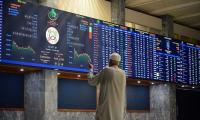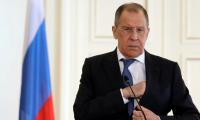LAHORE: The economic planners have developed a very narrow export base of the country by refusing to think beyond textiles, and the export potential of other sectors of the economy remains neglected.
Hardly a few sectors in Pakistan are part of the billion dollar club, which includes few subsectors of textiles which cumulatively export goods worth $13.5 billion. The next highest export item is rice, not a manufactured good, with exports of $3 billion.
Exports of all other items are less than $1 billion. One cannot expect much with its total exports hovering around $24 billion.
If we look at neighbouring India, there are over three categories where exports are worth $40 billion or above. These include mineral fuels, including oil, gems and precious metal, textiles and clothing.
Exports from pharmaceuticals, machinery including computers, organic and inorganic chemical fetch over $20 billion. There are many sectors that are in $10 billion club.
Those include vehicles ($18 billion), electrical machinery equipment ($11.8 billion) and iron and steel ($10.1 billion). Apart from these, scores of sectors including handicrafts register exports of around or above $5 billion. Total Indian exports are worth $330 billion which is over 13 times higher than Pakistan’s textile exports.
India is the world’s fifth-largest meat producer and exporter, accounting for 6.9 percent of global meat production. Last year, India produced 4.50 million tons of meat. Meat exports fetch India over $4 billion a year.
In Pakistan the economic planners have periodically been paying rebates, refunds on textile exports based on calculations conducted in consultation with the textile industry. The refunds are provided only on inputs where the sales tax has been paid or in other words where the purchases have been made from sales tax registered persons.
Though the refunds in recent years are being delayed, still the exporters have legal and genuine claim over these refunds that the government is bound to pay. Since textile sector had government support and facilitations, they mostly procure inputs from sales tax registered persons and then claim back that amount after exports are made. This also includes the sales tax they pay on electricity and gas.
For most of the other sectors of the economy, the refund of taxes paid on exported goods remains a problem. They do not even get the refunds on the general sales tax paid on electricity and natural gas.
For the textile sector there is a precise calculation made with the assistance of the private sector on the amount of gas and electricity used in manufacturing any item, and the sales tax paid is calculated and refunded accordingly.
For other sectors no such exercise has been conducted. Most of them export goods without claiming refunds because their inputs are available with persons that are not registered in sales tax.
Even the sales tax paid on power and energy bills is not refunded. In some cases, the FBR has arbitrarily fixed some refunds on exports that are much less than the amount they paid at the time of buying inputs.
Exports the world over are zero-rated, but in Pakistan the exports are made almost zero-rated through refunds for only five sectors. Of these five, textiles sector claims the highest refunds in terms of the zero-rated facility.
For all other exporters, planners have made no such provisions. The non-textile exporters of the country are real heroes who are earning foreign exchange against all odds.
If we look at the profile of Indian exporters, we find similar sectors in Pakistan. If we see the textile export performance in our official export records, handlooms do not export. In fact, handlooms are things of the past in Pakistan, but these very handlooms, considered the primitive weaving machines operated manually are adding billions of dollars to Indian exports.
Our gems and jewellery exports are still in nascent stage even 15 years after this concept was promoted. The Indians are way ahead. Why can we not add $5 billion in our exports through gems and jewellery?
It needs similar handholding that government and the financial institutions provide to the textile sector. We produce top quality drugs, but the regulators here are more interested in controlling prices than ensuring global standards on manufacturing and storage of drugs.
The pharmaceutical industry should be facilitated to get approvals from developed economies so their products can be exported.
An undated image of the Honda Atlas Cars plant. — AFP/FileKARACHI: Honda Atlas Cars Limited has officially...
Participants, officials pose for a group photo at "AIM’" event. — ReporterKARACHI: Martin Dow Group underscored...
Special Assistant to Chief Minister of Sindh for Investment and Public-Private Partnership Syed Qasim Naveed Qamar...
This handout photo, released on April 10, 2025, shows a generic view of the Dubai Lynx Awards ceremony at the Emirates...
A view of panel discussion on "How Industries Can Go Carbon Negative and Promote Sustainable Practices" at UCP, April...
Pakistan can benefit from trade diversion, emerge as supplier of textiles, surgical instruments or agricultural goods







